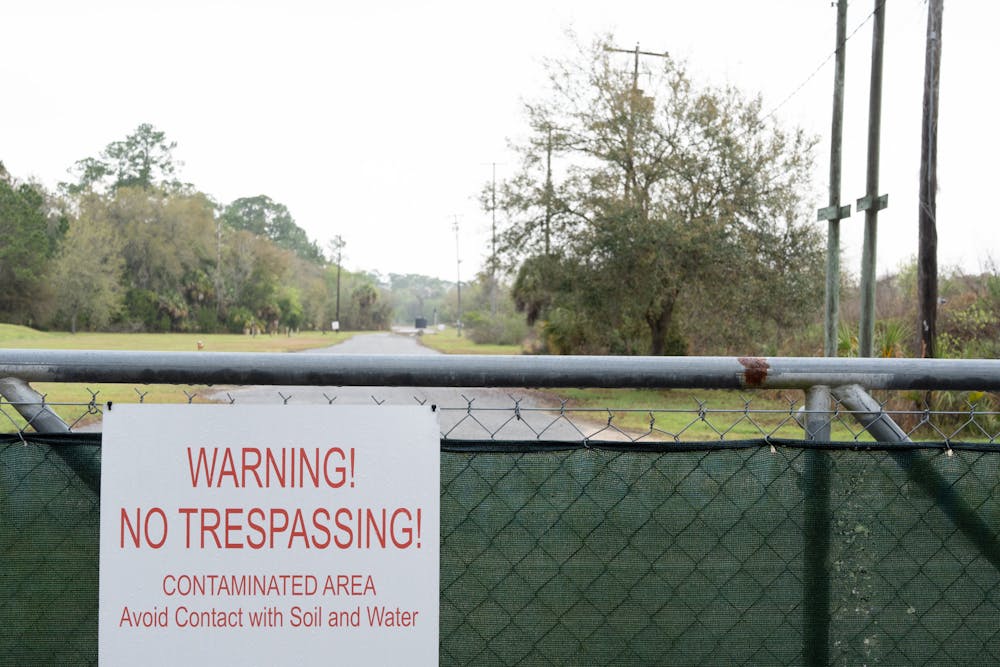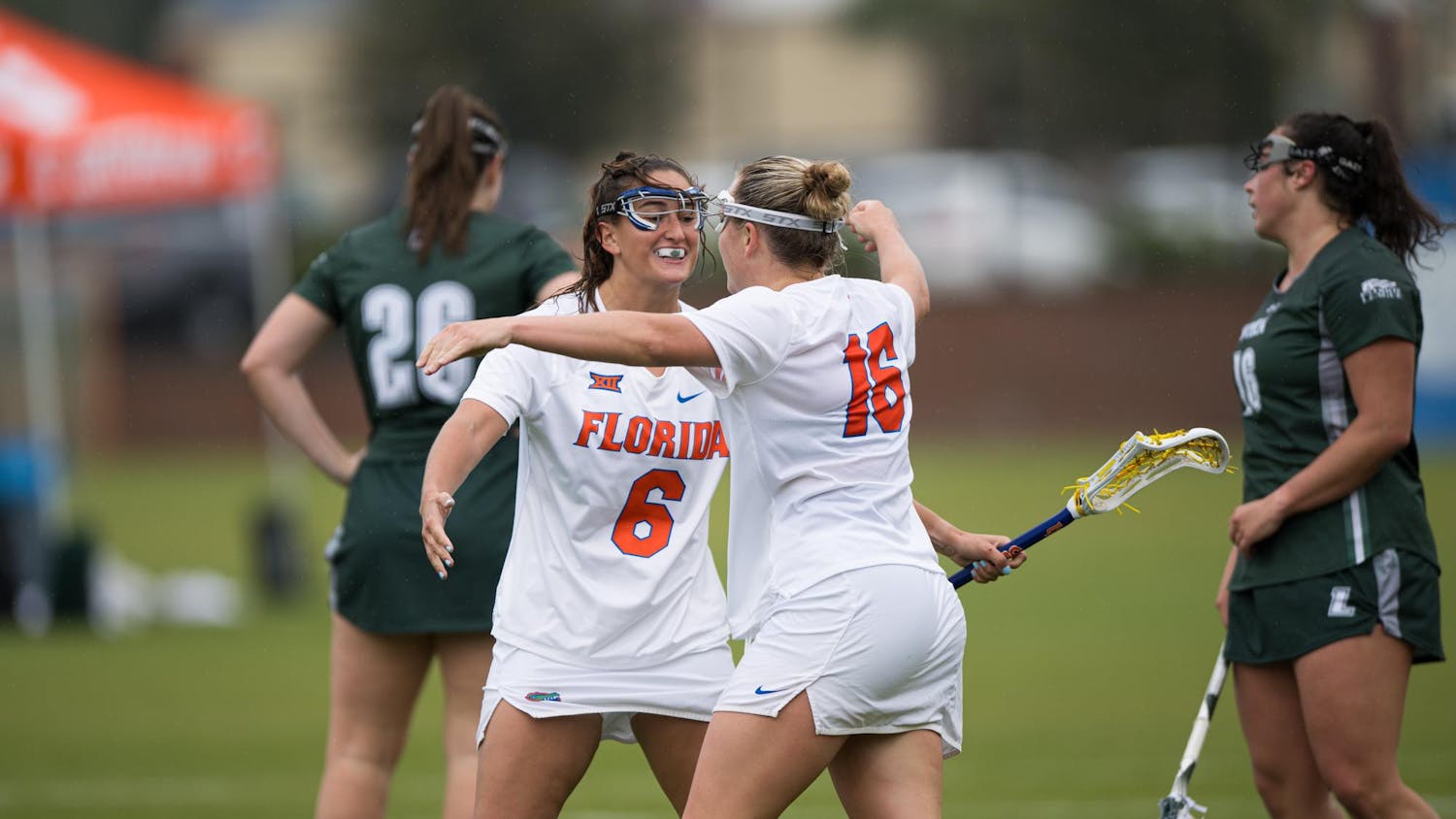When Robert Pearce bought his home in Gainesville’s Stephen Foster neighborhood, he didn’t know he was moving next door to a hazardous waste site. The 71-year-old resident began investigating what he’d heard about nearby contamination after moving into his home in 2008.
“I started to get unhappy, and then I got involved,” he said.
Pearce had moved into a home only a couple of miles away from the Cabot Koppers Superfund site at 200 NW 23rd Ave., an area the Environmental Protection Agency designated as containing large amounts of toxic waste.
Since the 1990s, the companies responsible for the cleanup have been working to remove contaminants from the site and the surrounding Stephen Foster neighborhood. The hazardous chemicals from the site have raised concerns for Pearce and other residents, who worry about potential risks to human and environmental health. The future of the site is also in question, as remedial efforts are extending years longer than originally planned.
The superfund site contains two properties: a charcoal and pine tar plant previously owned by Cabot Carbon, and a wood treatment facility operated by Koppers Inc. Activity at the site began in the early 1900s and lasted almost a century, with Koppers being the last to end operation in 2010.
During the facilities’ operation, harmful chemicals like arsenic and lead seeped into the air and soil. Neither company practiced proper wastewater management, and contaminated sludge was released into unlined ponds, which leached into the nearby Hogtown and Springstead Creeks.
Pollutants drained into the sediment of the creeks, killing off nearly all ecological life and posing a risk for any residents coming into contact with the water. When Pearce moved into his home, which sits next to Springstead Creek, he noticed the water’s neglect.
Once Pearce learned about the site, he began to push for proper stormwater management and complete remediation. He went door to door to speak to residents, and put together presentations for the Gainesville City Commission and the EPA.
“You kind of have to be the squeaky wheel to get things done,” he said.
Cabot completed its remedial efforts in 2020, and the cleanup at the Koppers site was intended to be finished at a similar time. Yet the remediation at Koppers is still ongoing due to a disagreement between Beazer East — the company formerly known as Koppers — and the Florida Department of Transportation. For years, the two entities have been in a deadlock about how to relocate a drainage ditch that empties into Springstead Creek.
Discussions surrounding the relocation are still in progress, Beazer East President Michael Slenska said. Beazer East is hoping to finalize the relocation plans this year, he said, and finish the construction of it by 2025.
However, there is still no estimated end date for the total completion of the site’s cleanup. Remediation cost over $50 million, and Slenska said Beazer East has no current plans to develop or sell the site once cleanup is complete.
“For the past 30 years… we have been operating a groundwater treatment system at that location,” Slenska said. “So our expenditures go back many decades.”
From 2009 to 2014, Cabot Carbon and Beazer East tested and removed contaminated soil from homes in the Stephen Foster neighborhood. Heather Hushelpeck, a resident of the Stephen Foster neighborhood, has a home that borders the Koppers site.
Hushelpeck, 50, had the top two feet of soil on her property removed and replaced. At least 100 other homes underwent similar remediation after high levels of arsenic and other contaminants were found in the soil.
She was less worried about her soil and more concerned with chemicals leaching into the city’s groundwater. The Cabot Koppers site sits above the Floridan aquifer, which supplies water to thousands of Gainesville residents.
“Any issues that they had with leaking into the aquifer system… that affects all of Gainesville,” Hushelpeck said. “If it affects us, it affects everybody.”
Testing from the early 2000s showed contamination from the site had leaked into the Floridan aquifer, Gainesville Regional Utilities engineer Rick Hutton said. GRU’s wellfield, which draws water from the aquifer to supply to the city, is less than four miles from the Cabot Koppers site. Hutton said the aquifer’s contamination raised concerns that the city’s water could be tainted.
GRU has been monitoring the wellfield in case of contamination, Hutton said, but thus far the city’s water hasn’t been tainted. Even after remedial efforts are complete, the aquifer will still have to be watched for potential pollution, he said.
“With these big contamination sites, you have to monitor them forever,” Hutton said. “Just to make sure that something unexpected isn’t happening.”
Gina Hawkins, a 64-year-old former resident of Stephen Fosters, can still recall walking down Second Street in the 1980s and seeing a cloud of dust rolling off the Koppers site. The dust was a common sight for residents while Cabot and Koppers were active, Hawkins said.
The dust contained chemicals such as chromium, copper and arsenic. Exposure to these chemicals can lead to health problems such as liver failure and lung cancer, according to the National Library of Medicine.
After a 2011 study, the Alachua County Health Department found a very low increased cancer risk from dust in Stephen Foster homes. Even if the risk is minimal, Hawkins believes all residents should be aware of what’s in their backyard.
Hawkins worked for the nonprofit organization Clean Water Action Project throughout the late 1900s and early 2000s to educate citizens and advocate for the site’s cleanup.
“That was the point of our whole campaign was to make people aware of what was going on and what they were being exposed to,” Hawkins said. “So they could make choices too.”
It can be difficult to measure the impacts of the Cabot Koppers site on human health, physiological sciences UF Professor Leah Stuchal said. The sample of people affected by the Superfund site is small, she said, making it hard to draw conclusions.
Stuchal, who conducted a risk assessment for the Cabot Koppers site, said some of the most dangerous impacts may take decades to show up. It takes years of exposure to increase the risk of cancer, she said, which is a concern for experts.
Even after remediation, it’s unlikely the Cabot Koppers site will ever be safe enough to be developed into a residential area, Stuchal said. The site’s cleanup is zoned for commercial industrial use, which doesn’t account for people with compromised immune systems, she added.
“If you’re going to fix it to residential standards, now you’ve got people of all kinds of different health status,” she said. “And that’s definitely going to need higher protection levels.”
In the decades since remediation began, some residents of Stephen Fosters have expressed a desire for the city to develop the Cabot Koppers site into a park or event center.
While proposals have been made, Gainesville won’t pursue development until Beazer East completes its remediation, City Commissioner Bryan Eastman said. The site’s zoning would have to be changed, and negotiations between the city and the site’s owners would have to be pursued, he said.
In the future, Eastman hopes the site can be developed into a recreational place or protected for conservation. As the Hawthorne Trail bumps up against the Cabot Koppers site, Eastman said he’d like to see the trail extended through the site in the future.
“It’s something that needs to get cleaned up and should be better utilized by the community,” he said.
Contact Kylie Williams at kyliewilliams@alligator.org. Follow her on X @KylieWilliams99.
Kylie Williams is the Spring 2025 Digital Managing Editor and a third-year journalism major. She has also worked as the enterprise editor and the environmental enterprise reporter. In her free time, she can be found reading, baking or watching reality TV with her cat.






